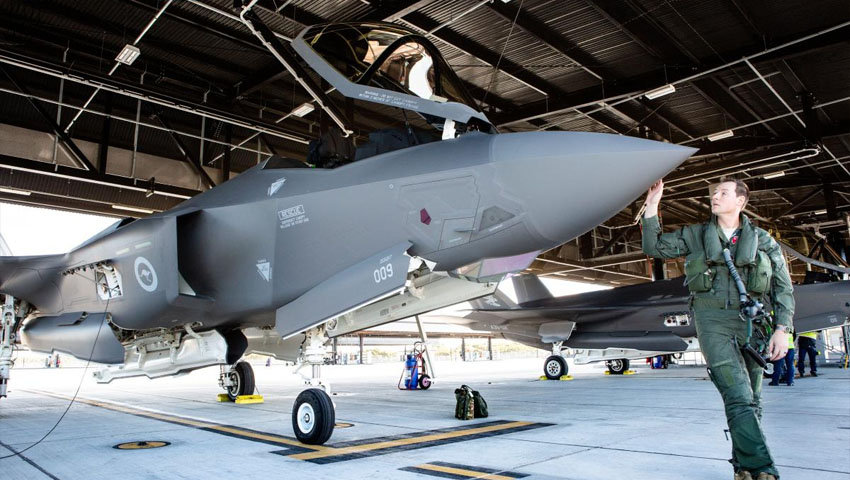The Pentagon has issued a restriction order for Lot 9 and newer Lockheed Martin F-35A Joint Strike Fighters after the discovery of cracks in the aircraft’s stealth coating following use of the 25mm gun.
To continue reading the rest of this article, please log in.
Create free account to get unlimited news articles and more!
Continuing concerns about the Lockheed Martin F-35 Joint Strike Fighter have been the focus point of the Director, Operational Test and Evaluation: FY2019 Annual Report conducted by Robert Behler, Director of Operational Test and Evaluation (DOT&E), revealing "873 unresolved deficiencies" with multibillion-dollar platform.
Behler's report into the F-35 program stated, "Although the program is working to fix deficiencies, new discoveries are still being made, resulting in only a minor decrease in the overall number of deficiencies.
"There are many significant deficiencies that should be addressed to ensure the System Development and Demonstration (SDD) baseline configuration is stable prior to introducing the large number of new capabilities planned in Block 4."
Most startling of which is revelations that airframes of the Lot 9 build and subsequent lot builds have experienced cracks in the outer mold-line coatings and the underlying chine longeron skin, located near the 25mm gun muzzle of the F-35A variant.
While all three variants of the F-35 share a 25mm gun, the F-35A has an internal gun system, while both the short take-off and vertical landing (STOVL) F-35B and the aircraft carrier-specific F-35C variant mount the 25mm gun in an external gun pod.
Differences in the outer mold-line fairing mounting make the gun pods unique to a specific variant. For example, a F-35B gun pod cannot be mounted on a F-35C aircraft – both gun pod variants are fitted in a specialised low-observable pod along the airframe's centreline.
Additionally, Behler's report reveals concerns about the accuracy of the gun, as installed on the F-35A "unacceptable". In response, Behler's report states: "The program has made mission systems software corrections to improve the stability of gun aiming cues. The program also made progress with changes to the gun installation, boresight processes, and hardware.
"However, testing to confirm the effectiveness of these changes was not yet complete. Until the new hardware and software changes are successfully tested
and verified in operationally representative conditions, the F-35A internal gun system remains unacceptable."
In response to this, the Pentagon and US Air Force have "restricted the gun to combat use only for production Lot 9 and newer aircraft" in order to avoid unnecessary damage to the sensitive low-observable coatings on the aircraft.
The Lockheed Martin F-35 Joint Strike Fighter is billed as a catalyst for the fifth-generation revolution, changing the face and capability of the Royal Australian Air Force (RAAF) and the wider Australian Defence Force.
For the RAAF, the F-35A's combination of full-spectrum low-observable stealth coatings and materials, advanced radar-dispersing shaping, network-centric sensor and communications suites – combined with a lethal strike capability – means the aircraft will be the ultimate force multiplying, air-combat platform.
The F-35A – the variant chosen by the RAAF – will have a projected life of 30 years in service. Ten nations are currently flying F-35s, including the US, UK, Italy, Norway, Israel and Japan.
The first of Australia’s F-35A aircraft are now based on home soil after a period of training and development at Luke Air Force Base in Arizona, US, plus an epic Pacific Ocean crossing in December 2018.
More than 340 F-35s are operating today with partner nations, more than 700 pilots and 6,500 maintainers have been trained, and the F-35 fleet has surpassed more than 170,000 cumulative flight hours.
Over the coming years, Australia will purchase 72 of the advanced fifth-generation fighter aircraft as part of the $17 billion AIR 6000 Phase 2A/B program – which is aimed at replacing the ageing F/A-18A/B Classic Hornets that have been in service with the RAAF since 1985.
The full report into the F-35 program is available here.
Stephen Kuper
Steve has an extensive career across government, defence industry and advocacy, having previously worked for cabinet ministers at both Federal and State levels.

 Login
Login








